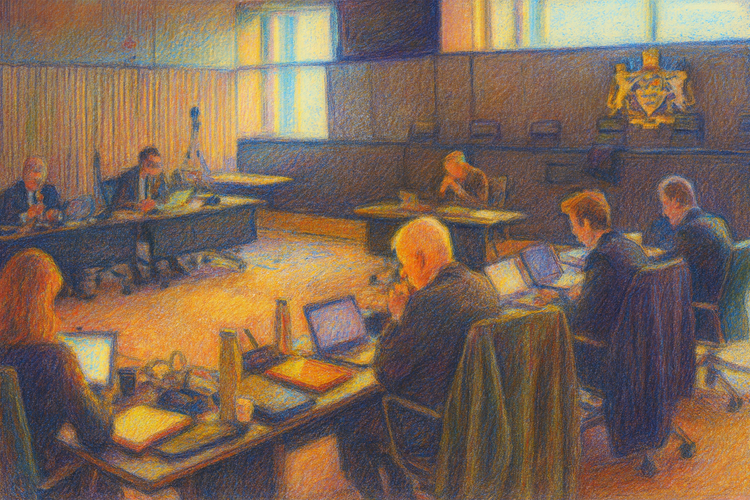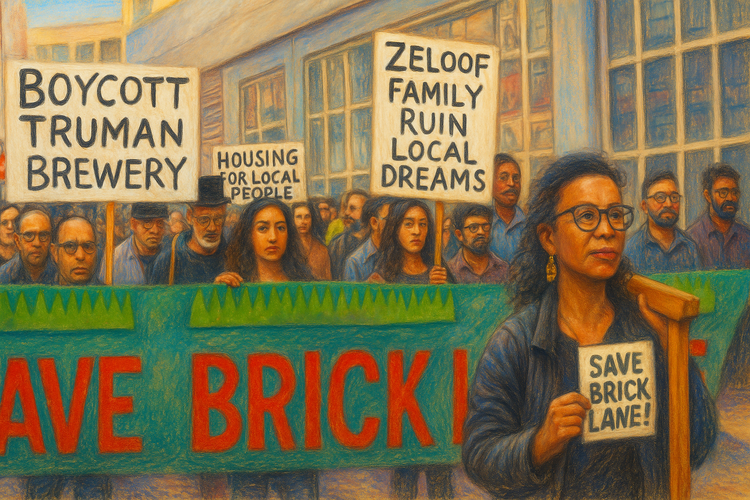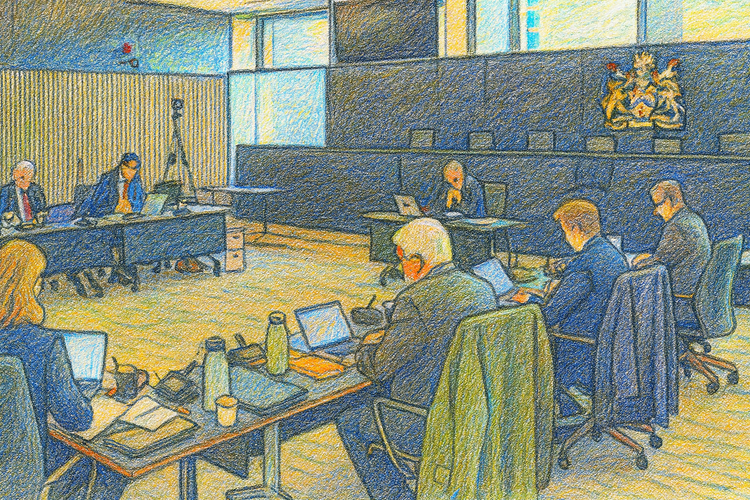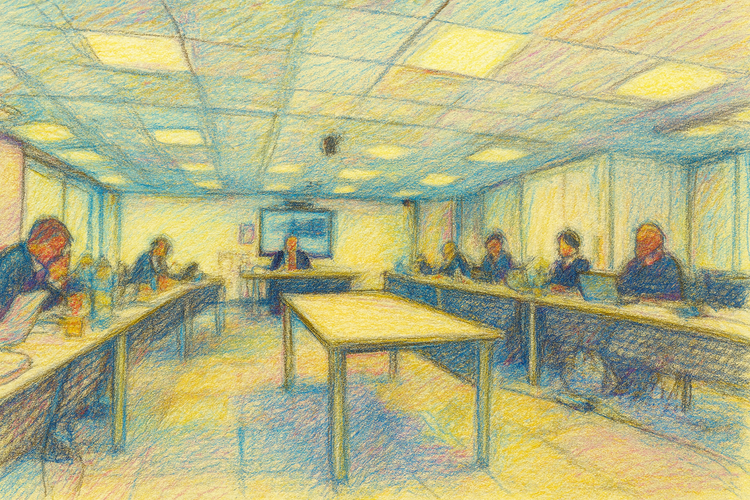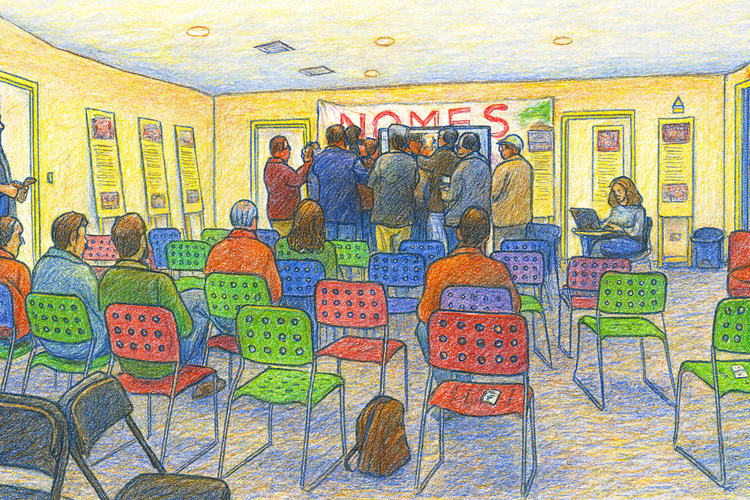Brick Lane Public Inquiry — Day Two (Afternoon): Heritage as Commodity
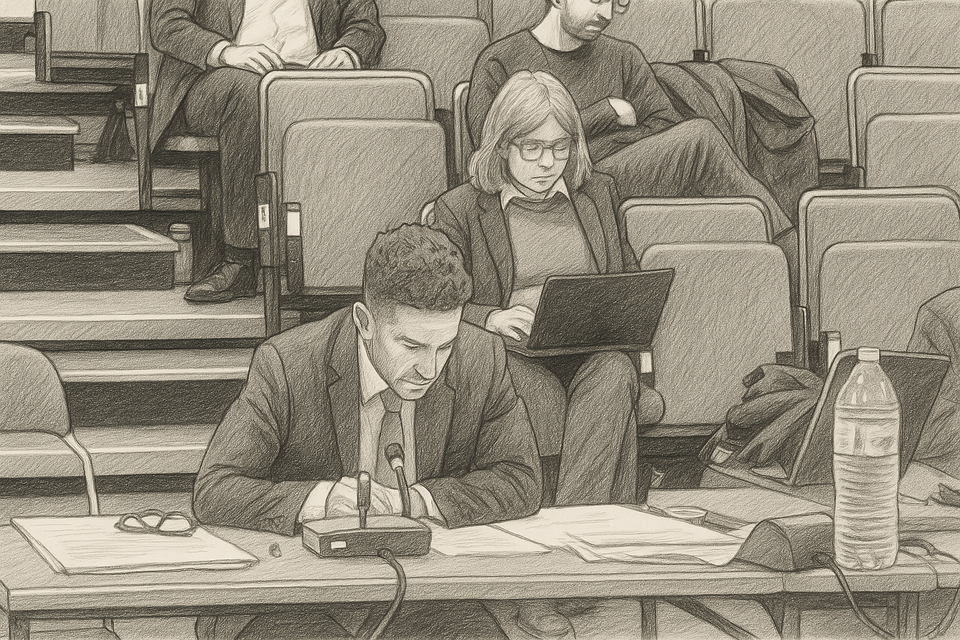
From Design to Heritage
After the adversarial theatre of the morning, the Inquiry returned after lunch to something ostensibly calmer: heritage. But heritage, like design, is never neutral when placed under cross-examination.
Ignus Froneman, heritage consultant for the London Borough of Tower Hamlets, rose to defend what the Council’s case called “a unique urban palimpsest — industrial brickwork threaded through domestic streets.” He described the Truman Brewery as an ecology of age and adaptation, where the uneven grain of buildings carried the story of work, migration, and repair. The proposed scheme, he explained, would replace that texture with a single, curated logic: new blocks that reference the old while erasing the conditions that produced it.
Behind him, the projected map of the Conservation Area glowed red at its edges, showing the bulk of the new construction where the street narrows toward Fournier Street. It was, he said, “a managed authenticity — heritage by design rather than inheritance.”
The Reframing of Harm
When Russell Harris KC resumed his seat for the developer, the temperature in the room dropped a few degrees. He began evenly: “‘Less than substantial harm,’ Mr Froneman, is it not by definition less than significant?” Froneman answered without hesitation: “No, it remains harm to significance; the degree is quantitative, not qualitative.”
That distinction — between what can be measured and what can only be valued — became the day’s pivot. Harris pressed on: “Quantitative, then. So you measure it?” From there, heritage became arithmetic: percentages of façade loss, metres of height difference, projected footfall. The witness’s moral vocabulary was translated into numbers, as if cultural memory could be costed per square metre.
The Semantics of Setting
At one point the Inspector, Paul Griffiths, intervened. “Let us be clear,” he said, “‘setting’ includes experience as well as view?” Froneman agreed. “Setting is context, not just sightline.” Harris replied with a faint smile: “I prefer to stay with the visual dimension, sir.” That brief exchange captured the afternoon’s divide: for the Council, heritage meant lived relation; for the developer, it meant optical frame.
Cumulative Harm, Public Benefit
Harris shifted ground to the balancing exercise prescribed by policy. He recited from the developer’s planning proof — the litany of “public benefits”: jobs, new routes, landscaping, and twenty-six thousand square metres of flexible workspace. Then came the punchline: “Surely, when we apply the balance, this quantum of benefit outweighs your so-called harm.” Froneman answered softly: “Public benefits do not cancel heritage loss; they merely coexist with it.”
The phrase hung in the air. It was the day’s most honest line — a reminder that planning law is a vocabulary of coexistence, not redemption.
The Marketisation of Authenticity
What unfolded was not a dispute over measurement but over meaning. In the developer’s world, authenticity is a resource to be activated; in the Council’s, it is a condition to be respected. The BELCOR report, already lodged in evidence, had called the Truman Brewery a “micro-market of its own” with “global demand from creative industries.” That language surfaced again in the cross-examination: heritage as offer, context as value.
Froneman’s maps spoke of continuity; the barrister’s questions translated it into yield. The Inquiry, in miniature, became a model of the city it judged — a place where character is treated as currency.
The Performance of Balance
From the public benches, Save Brick Lane supporters watched in silence, notebooks open. One later remarked that it was “like watching someone defend the soul of a place with a spreadsheet.” The observation was apt. Every answer by the witness was parsed for profitability; every concession weighed against return. The cross-examination was not simply a contest of facts but a rehearsal of how planning frames truth — in the grammar of the market.
Heritage as Strategy
By the close of questioning, the outlines of a larger logic were visible. In London’s redevelopment economy, heritage is no longer an obstacle to growth but a strategy within it. To call a scheme “heritage-led” is to monetise the very constraint that once limited profit. The façade becomes the guarantor of value; continuity becomes a selling point. The Truman Brewery project, with its 26,000 m² of office space, token housing, and absence of rent control, exemplifies this inversion: conservation as capitalisation.
Coda — The Cost of Care
As the session ended, Inspector Griffiths thanked the witness, and the room exhaled. Day Two closed not with consensus but with a revelation: that the city’s memory now trades in the same market as its future.
The rhetoric of “heritage-led regeneration” disguises a deeper process — the conversion of cultural worth into financial instrument. What remains of Brick Lane’s working heritage is offered back to the public as lifestyle texture, while those who made that heritage are priced out of its display.
If the morning had revealed the grammar of power, the afternoon revealed its economy: how heritage itself is transformed into product, and preservation into premium.
“Public benefits do not cancel heritage loss; they merely coexist with it.”
That single sentence, delivered almost as an aside, may prove the Inquiry’s truest measure of honesty.
Editorial note: This report is a fair and accurate account of open proceedings at the Truman Brewery Public Inquiry and is protected by qualified privilege under Schedule 1 of the Defamation Act 1996; commentary reflects the author’s analysis in line with NUJ and IPSO standards.
